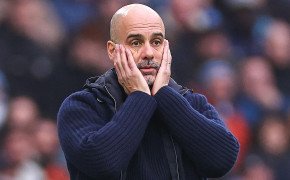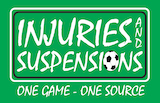With the transfer window now a distant memory and the international break in our rear view mirrors, the Premier League season made a welcome return for week four. It also offered an opportunity for some early narratives to shake out, or at least go on hiatus.
Chief among those was Arsenal’s result. A team on a three-game losing streak such as Bournemouth were the ideal visitors to the Emirates. Add in that the Cherries have conceded an average of nearly three goals per game against the big six across more than two seasons and Arsenal’s routine 3-0 victory was the perfect pressure reliever - at least for now.
Another short narrative to take a knock was around the supposedly invincibility of Manchester United. Their draw at Stoke was structurally fine (they significantly outshot the Potters) but also reflected the feeling they aren’t quite the finished article just yet. United have had the best of every game they’ve played this term, but they would have been expected to against less capable teams.
The belief that they are genuine title challengers looks sure to maintain for a while longer, though. Jose Mourinho's men will not face a particularly stern test until they visit Liverpool in mid-October, and it’s still too early to gauge whether this is a team capable of contending late into the season, or if the schedule has slightly flattered them.
In winning 3-0 at Everton with some ease, Tottenham navigated a fixture that has given them trouble in recent years. The Toffees received widespread praise for their lavish spending in the summer, but so far there is scant evidence that they will be improving on their “best of the rest” position from last year.
The effect of the loss of Romelu Lukaku is easy to comprehend and is emphasised by his dynamic start for United, but the absence of Ross Barkley may quietly be hurting them too. He was the team’s major contributor to shooting opportunities last season - for Lukaku and others - and his ability to run with the ball often eased pressure. Three consecutive games against the league’s better sides have magnified the stoic realities of Ronald Koeman’s methods, but having to integrate so many new faces in place of formerly key men was never likely to be straightforward.
At the other end of the table, a lot of attention is landing on the winless trio of Crystal Palace, Bournemouth and West Ham (who have a chance to remedy this in their game against Huddersfield on Monday). Beyond these teams, though, it’s Swansea who look to have significant early issues. Four points might seem healthy enough but it’s the underlying numbers that cause most concern. Paul Clement rightly garnered a lot of praise for rescuing Swansea last season, but while he found a way to save his team the methods weren't particularly pretty. The team were reliable scorers considering their league position - 24 goals in 19 games was a fine return - but they did this while creating very few chances; only Middlesbrough shot less frequently that Swansea during Clement’s reign.
The low shot volume is not a good sign when evaluating their future potential and, so far this season, there has been little to praise in attack. They are yet to record more than ten shots in a single game - well under the league average of around 13 - and have failed to score in three of their four outings.
It's also difficult to understand their recruitment strategy, even at this early stage. By selling Gylfi Sigurdsson and Fernando Llorente, Swansea face a similar problem to Everton. With ten assists and 13 goals between them, they were the two players who contributed most towards their attack under Clement. Even though both players ran hot and scored ahead of statistical expectation, nobody else contributed anything in the way of attacking volume.
In their place are players who represent gambles. Wilfried Bony is talented and may love the club, but his career has flatlined since he first left the Liberty Stadium for Manchester City: he has just three goals and very little playing time since the start of 2016. Tammy Abraham is extremely promising, but the youngster suddenly finds himself in at the deep end as the front prong of a limited attack. Whether Sigurdsson has been adequately replaced is arguable too. A string of central midfielders have arrived but none look to move the needle with regard goals, while the attacking and creative ends of the team now look understaffed.
So: week four and no team has attempted fewer shots. Alongside this, no team has allowed more. It’s shaky stuff. Clement’s inability to run an efficient attack will become further exposed if the defence is incapable of limiting the opposition, as has occurred so far in 2017/18. Significant time has now passed since Swansea were a team comfortably ensconced in the league and they can no longer rely on the residual effect from their mid-table finishes. Last season they were threatened by relegation because they had genuinely declined.
There are another three games until the next international break, and Swansea face two trips to London (to Tottenham and West Ham) while welcoming a resurgent Watford to the Liberty Stadium. If they don’t start taking more than a quarter of the shots in a game soon, they will be right back in trouble again.















